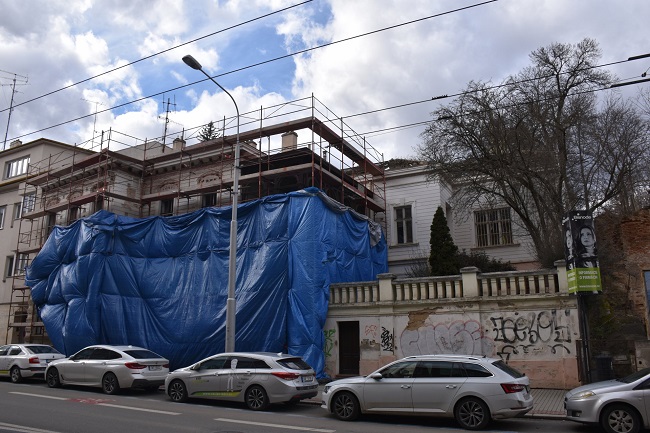
The Ombudsman will investigate the circumstances surrounding the demolition of two historic buildings in Brno and Prague
 |
Brno – The public defender of rights, Stanislav Křeček, has initiated two investigations concerning the demolition of historic buildings in Brno and Prague. The aim is to map and assess the legality of the authorities' actions and to determine how state bodies could prevent similar situations in the future. The ombudsman's office informed about this today on its website.
The ombudsman will examine the circumstances surrounding the demolition of a neo-Renaissance villa on Hlinky Street in Brno during this year's Easter and the demolition of a historic building at the corner of Lannova and Revoluční Streets in Prague 1. According to him, both cases are connected not only by the historical value of both buildings and the effort to classify them as immovable cultural monuments but also by the investor's intention to build new structures in their place.
"Both cases have sparked strong reactions from both experts and the general public. In the case of the Brno villa on Hlinky Street, the most shocking aspect is the last moments before its demolition. The owner notified the building authority on Good Friday, just a few days after the Ministry of Culture issued a decision to declare the building a cultural monument. Then, during Easter, the demolition was completed," summarized the circumstances of the Brno case, Křeček. The investigation will focus on the actions of individual offices; he has therefore approached the Brno magistrate, the Brno-Centrum district, the National Heritage Institute, and the Ministry of Culture to send him available documents.
According to available information, the process of "monumentalization" of the villa began in December 2020. However, in February 2021, according to the office's website, the neo-Renaissance wooden veranda disappeared from the building, the rich neo-Renaissance architectural features of the facade were removed, and the roofs of the structure were gradually taken down as well. When starting proceedings to declare a property as a cultural monument, the Ministry of Culture always informs owners that they are obligated to protect the building from damage or destruction until the proceedings are completed.
The events surrounding the construction of a multifunctional building at the site of the original historic house at the corner of Lannova and Revoluční Streets in Prague caught the public defender's attention for the first time ten years ago. Stanislav Křeček, as a representative of the ombudsman, closed the case in October 2013. The Ministry of Culture then annulled the binding opinion of the Department of Heritage Care of the Prague magistrate regarding the permissibility of demolishing the house and returned the case for new consideration. The Ministry of Culture had previously conducted proceedings to declare the house as an immovable cultural monument, but it was not declared as such. The owner has also already had this house demolished.
The ombudsman began investigating both cases at the moment when the cities lost historical valuable buildings. According to the office, the aim of the investigation is to map and assess the legality of the authorities' actions and to find out how state bodies could prevent similar situations in the future. The ombudsman also wants to determine whether the current legal regulation, especially the law on state heritage care, includes effective rules for the protection of buildings that are not cultural monuments but have historical value. The findings from this investigation could then be used, for example, in comments on the upcoming new heritage law.
The English translation is powered by AI tool. Switch to Czech to view the original text source.
0 comments
add comment










